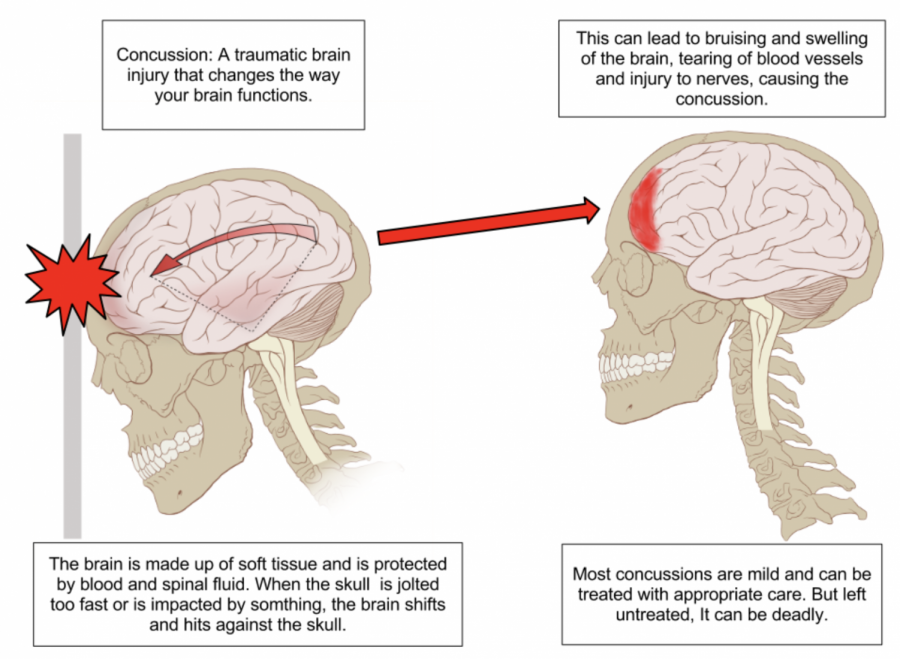Contact sports must be better regulated
A concussion is a traumatic brain injury that changes the way your brain functions. When the skull is jolted or impacted by a hard surface, the brain shifts, slamming against the skull, causing damage and swelling to the brain. If treated correctly, the brain will heal. But if not, results can be deadly. Diagram on Concussion Mechanics by Max Andrews.
March 11, 2020
Football players range from children as young as 3 years old to professional adults. Throughout their football careers, players often experience multiple, life-threatening head injuries.
Head injuries in football have increased despite new rules and restrictions. Football leagues and professional teams haven’t taken enough suitable precautions to regulate the number of head injuries. More needs to be done, especially in youth sports.
Concussions in recreational sports are more common than one might expect. 1.6-3.8 million sport and recreational concussions are diagnosed in the United States every year. Football concussions occur once every five and a half games. Football clubs have tried to improve the safety of their players with new rules, but 5 out of every 100 youth players are diagnosed with football-related concussions. Five percent of players have football-related concussions each season. The number of players between the ages of five and fourteen has doubled, even with the new guidelines enforced.
High school football is widely prone to concussions. More than 60% of high school concussions occur in the sport of football. In high school, 51.8% of concussions happen in games while 48.2% happen during practice. According to a recent study, out of the 14,103 concussions researched, 6% are from high school football. This information is now the largest high school concussion study to date. In a season, 20% of high school students will get a concussion. These statistics must decrease to ensure the safety and protection of players.
The National Football League (NFL) 2019 season had an increased amount of concussions than the previous 2018 season with a total of 224 concussions diagnosed throughout the preseason and regular season. Thankfully for the players, the NFL has had a concussion protocol since 2009, which immediately removes the player from the field and to the team physician for a neurological exam. But, despite these measures, the rising numbers of athletes with concussions is alarming.
Some might argue that concussions are bound to happen if in contact sports. However, despite the fact that players are risking their health for the sport, there are safety precautions that are in place to avoid possible injuries. According to the National Operating Committee on Standards for Athletic Equipment (NOCSAE), all athletes are required to wear protective gear when playing. Examples of gear would be pants with leg pads, shoulder pads, shoes, mouthguards, and an athletic supporter with a cup. Although all these items are important, one of the most important items is a helmet. After checking that your helmet is the best suited for you, the likelihood of you getting a serious head injury or concussion is slimmer. Helmets, however, are not a cure-all against concussions.
To avoid increasing the number of injuries in football, there needs to be stricter rules and protocols. An example could be pulling an athlete that shows symptoms of a concussion from practices, scrimmages, and games until there are symptoms. This will allow coaches and athletes to understand that concussions or any injury is a serious problem that needs to be immediately addressed and fixed.
The protocols also need to be stricter to avoid recurring concussions. This will be beneficial to the athlete in the present and possible future because once you have a concussion the probability of you getting another one is three times the amount.
Overall considering that football brain injuries range from 65%-95% of fatalities, football needs to be safer for all athletes. With the increasing number of concussions in football, precautions need to be taken seriously from the top down, starting with the leagues.











